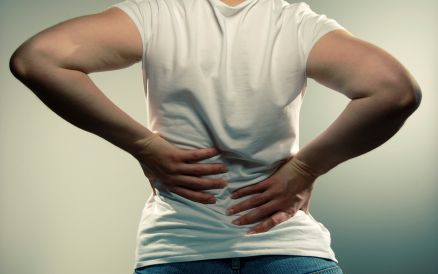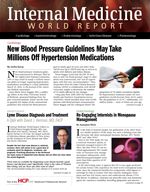Dual-hormone Therapy Reduces Pain, Opioid Use in Intractable Pain Patients
Administering 2 so-called pregnancy hormones simultaneously in patients suffering from intractable pain may significantly reduce their opioid use, pain, and flare intensity.

Administering 2 so-called pregnancy hormones simultaneously in patients suffering from intractable pain may significantly reduce their opioid use, pain, and flare intensity, according to a preliminary study presented at the American Academy of Pain Medicine (AAPM) 2014 Annual Meeting, held March 6-9, 2014, in Phoenix, AZ.
According to lead study author Forest Tennant, MD, DrPH, an internist and addictionologist at the Veract Intractable Pain Clinic in West Covina, CA, both oxytocin and human chorionic gonadotropin (hCG) hormones have been linked to reduced pain and need for pain medicine among pregnant women when released naturally during and after childbirth. Oxytocin plays a powerful role in the neuroanatomy of intimacy, while hCG supports fetal development, Tennant explained.
In previous open-label trials, Tennant uncovered a similar analgesic effect in intractable pain patients when the hormones were administered separately. Nonetheless, he said no research had tested both hormones simultaneously prior to this preliminary study.
For the study, 9 patients with intractable pain who were receiving one or more long- and short-acting opioids were given daily sublingual doses of hCG ranging from 25-500 units, as well as 10 units of oxytocin administered sublingually 2-4 times a day. At 2-3 months follow-up, the patients were evaluated for pain relief, side effects, energy, mental function, and opioid dose reduction.
According to the study authors, one patient stopped the hormone therapy entirely, citing a lack of effect, while another patient stopped taking oxytocin because it made her despondent, though she continued taking hCG. However, the remaining 7 intractable pain patients reported 30-40% reductions in opioid use, pain, and flare intensity from baseline, as well as an increase in the period of time between pain flares. In addition, there were remarkably few side effects among the patients, “probably because the hormones are natural, bio-identical compounds,” Tennant posited in a statement.
“The benefit that these patients mostly talk about is somewhat subjective, but relates to what patients routinely call a ‘feeling of well-being,’ ‘more alive,’ or [increasing] ‘will to live,” Tennant said in the statement. “They also believe the combination is one they want to continue.”
Tennant told Medscape Medical News that he chose to conduct the study after observing similar patterns among his pregnant patients.
“I would see pain patients whose pain would simply go away if they became pregnant, and even heroin and methadone addicts would not need the drugs when they became pregnant, so it has been clear something was going on with this physiologically,” he told Medscape.
Although Tennant acknowledged it is too early to justify the combined use of oxytocin and hCG outside of those who are non-responsive to standard pain treatments, he stated the study’s preliminary results are “worth pursuing as an alternative to more symptomatic conventional treatments for intractable pain.”
